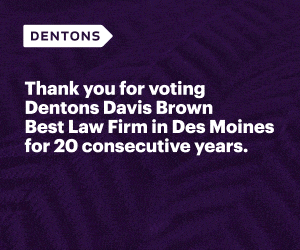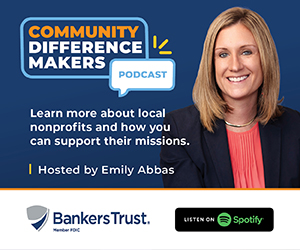Paying the price to tie the knot

Andrea Miller is now counting down the days to her Aug. 20 wedding, a 300-guest affair complete with a ’50s-theme rehearsal dinner, string quartet, two limousines, cocktails, dinner and dancing at the Temple for Performing Arts and, finally, a honeymoon to Hawaii.
Now just six weeks away from the big day that has been in the works since Miller’s fiancé, Wade Lawrence, proposed on New Year’s Eve, the money factor is creating stress in an otherwise joyous time in the couple’s lives. Not only has the average cost of an American wedding increased to $26,327, but Miller and Lawrence are also among a growing number of brides and grooms forgoing tradition when it comes to paying for their wedding. This year, only one-fourth of brides will rely on their parents to pay for the entire event, and nearly one-third will pay for it themselves.
“Our family was not able to contribute the entire amount; therefore we had to contribute the remainder,” said Miller, 27, whose sister will get married one month after her wedding. “Secondly, we feel that this is the biggest day of our lives, which we are sharing with our closest friends and family, and we just want to make it as special as we can for everyone. It is really important to us to provide a fun atmosphere.”
In today’s world, more women are attending college, some even graduate school, and as a result, they are more concerned with launching a career than getting married at a young age. Brides and grooms now average between 27 and 29 years of age. By getting married later in life, they have sufficient personal income to contribute financially, or pay for the entire event. And, experts say, they are more experienced consumers who know what they want and are willing to pay for it.
“Most every bride has some kind of storybook wedding hidden deep in her heart,” said Cynthia Betts, a wedding coordinator and executive director of IowaBride.com.
Market-driven decisions
Through six months of planning, Miller has come to realize that “anything attached to weddings tends to get expensive.”
In 2005, a total of $125 billion – about the size of Ireland’s gross domestic product – will be spent on 2.1 million weddings in the United States, according to the American Weddings survey conducted by The Fairchild Bridal Group. Though coordinators and wedding experts stress the importance of setting a budget and sticking with it, nearly half of all couples will spend beyond their budgets.
Kari Smith, owner of Schaffer’s bridal and formalwear shop in the East Village, said the wedding industry is seeing an increase in the amount of money spent on weddings, going back to a trend from the late 1990s in which couples and their parents hosted large, extravagant events. Weddings became more conservative following the economic downturn around the turn of the century that was accentuated by the Sept. 11, 2001, terrorist attacks.
“People watch the market and determine how much they want to spend on a one-time event,” Smith said. “Now you’re seeing more confidence in the marketplace as people make value-driven decisions. They are confident now to make a purchase or plan an event based on what they value.”
Since opening in downtown Des Moines more than 50 years ago, Schaffer’s, which moved from Eighth and Walnut Streets to the East Village in 2004, has weathered many changes in trends, often provoked by the ups and downs of the U.S. economy.
Smith said downtown Des Moines was a “bridal mecca” in the 1950s and 1960s, with about five bridal salons within a two-block area. The advent of shopping malls and the popularity of department store chains led to the demise of many of those independent retail stores. But Schaffer’s is now working with its fourth generation of brides, as are other wedding-related businesses in Des Moines, such as Joseph’s Jewelers and Boesen the Florist.
Increased competition from large department and national chain stores is made worse for these businesses by the fact that they sell to an essentially capped market – the number of weddings each year rarely varies by more than 10 percent, Smith said. With the ability to work with only a certain number of customers, those businesses become particularly vulnerable to new and emerging trends.
Getting a foot in the door
Despite the vulnerability, the idea of millions of brides spending tens of thousands of dollars on one-day events induces many skilled professionals to market their talents to the wedding industry. IowaBride.com hosts several bridal shows annually, and brings in many traditional vendors, such as disc jockey services and florists, as well as everything from cookie designers to financial advisers.
“We’re getting a lot more thinking-outside-the-box-type vendors,” Betts said. “We also have a lot of people who have stars in their eyes and think that they can make instant money, and unfortunately that just isn’t the case. You have to be in business for a long time and put your foot out there to make it a full-time business.”
The big bucks often go to those willing to fully commit themselves to the wedding industry, and invest the time and money needed to build a successful, customer-focused business. Gloria Olson, owner of Glorious Desserts, left her job as the choral director at Valley High School three years ago to design cakes full time, something she had been doing in her spare time for two years after a friend asked her to design a wedding cake.
She remodeled her house to add a second kitchen, complete with three refrigerators, two freezers and an oven, and now bakes, decorates, delivers and assembles cakes for as many as six or seven weddings each weekend. She has the help of two part-time assistants who clean and do prep work in the kitchen, but occasionally finds herself sleeping on the couch, waiting for the buzz from the oven timer. And some weekends she will stay up until Saturday at 4 a.m. to put the finishing touches on a cake that has to be assembled 10 hours later.
“It’s very much a full-time job because on top of that you have meetings with brides, and each appointment takes an hour, contracts, paperwork, invoicing, paying the bills and working with suppliers,” Olson said.
She has invested the time and money in order to study alongside cake designers across the country, and studied at the French Culinary Institute. She considers her cakes works of art, with unique structures, colors and designs. There are still brides, she said, who want a simply decorated cake with buttercream frosting that will feed 150 people, at a cost of about $200. But she also crafts six-tiered wedding cakes
“People always decide where they want to spend their money, and sometimes it’s on cake and sometimes it’s not,” Olson said.
Establishing priorities
Lindsey Nelson is the apple of her father’s eye, and her parents’ only daughter, so when she got engaged in October 2003, they were more than happy to pay for the June 4 wedding.
“The wedding was perfect,” said her mother, Pally Haag.
But Haag made attempts where she could to trim costs and do things on her own. She ordered invitations from an Iowa printer, shopped around for wholesale deals on flowers, handmade truffles to distribute as favors to guests, recruited a friend to make floral centerpieces and hired an amateur videographer for about one-third the cost of a professional.
Those cost-saving measures enabled the family to have a live big band at the reception, held at the Temple for Performing Arts, hire a Minneapolis-based photographer, and cover his travel expenses, host a sit-down dinner and provide swing dancing lessons for the wedding party the night before the wedding. For the most part, they stuck to the budget they established early in the planning stage.
“We went over budget in some things and under in others,” Haag said. “But there were things I didn’t think about, like postage.”
Miller has several expenses that she and her fiancé consider a priority for their wedding day. Among them were flowers, transportation to accommodate their 20-person wedding party, and music, which they believe will set the mood for the entire event. A string quartet will provide music for the entire ceremony. A vocalist and pianist will also perform at the ceremony, as well as during the cocktail hour and dinner at the Temple.
But an elaborate cake is not a priority in Miller and Lawrence’s budget, so her mother will bake one. They also passed on providing favors to their guests.
“It’s a big expense,” Smith said. “Before anyone gets too far along, they need to sit down and discuss what they value, what they want to spend money on, and then that helps all the providers as they help them make decisions.”
Memories – at a price
Despite the amount of money spent on weddings in the state, Central Iowa wedding vendors and coordinators realize the advantage of getting married in the Midwest. Costs for wedding locations, products and services are often exponentially higher on the East and West coasts, and weddings in those parts of the country are typically far more elaborate. Brian Garman, owner of Brian Garman Photography, said he has counterparts in the coastal states who charge $15,000 or more to photograph a single wedding.
But, he said, that makes Iowa a great place to have a wedding, especially for native Iowans who dream of returning home for their nuptials.
“Iowa statistics show that young couples are leaving, but the market is great because those couples are coming back to get married,” said Garman. “Their income is higher, so they can have a $50,000 reception. On the East Coast, it may cost them three to five times as much.”
Garman has realized the benefits of locating in this market, having established such a reputation that he photographs as many as 30 weddings a year. He abandoned portraiture about three years ago, having realized that though he spent only about half of his time doing wedding photography, it accounted for the overwhelming majority of his income.
Having photographed weddings for more than 26 years, he, like others with decades of experience, has seen an explosion in nearly every aspect of the wedding industry, with couples spending more money on more elaborate events. Even in Central Iowa, he has seen brides and grooms planning weddings on budgets of $80,000 or more.
Photography has undoubtedly contributed to that increase in spending. According to the American Weddings survey, couples are spending more than twice as much on their wedding photography and videography today than their counterparts did 20 years ago, with those expenditures now averaging $2,570.
Digital photography has taken Garman’s business, and those of other professional photographers, to a new level. He no longer worries about the number of rolls of film he’s allowed to shoot at a wedding, but instead shoots about 1,000 images that can be put into an album as well as a DVD slideshow with images that have been artistically rendered.
“I think the initial expense (of going digital) is a lot greater,” Garman said. “But going the digital route enables me to do the artistic end, which increases my income.”
Emerging trend
Once thought to be a “rich people only” service, wedding coordinators are becoming increasingly popular in the Midwest. The wedding coordinator is the know-all, see-all person behind the event who can do everything from find a live band that fits your budget to engage in crisis intervention when the limousine doesn’t arrive on time.
“There are people who have the time and wherewithal to do those things on their lunch break, on the weekends, and it’s even fun,” said Sonya Jennings of SOZO LC, an Ankeny-based event planning company. “But for those people, even when you get to the last week, you want someone to come along and tell you that everything you’ve picked out makes sense and is going to come together.”
Jennings, who founded SOZO nearly two years ago, works with a mixture of clients: brides with busy travel schedules, some who live outside Iowa and others who simply feel overwhelmed by the planning process.
“There are a lot of questions that brides and grooms don’t know to ask, and if you don’t ask, you don’t get,” she said. “That’s an advantage of having an event planner. I’ll ask questions that they don’t know they can ask that will get them better discounts.”
In just two short years, Jennings has made numerous contacts throughout Greater Des Moines – she said word of mouth is her best marketing tool – and continues to establish a network of vendors to refer to brides, and who in turn will refer brides to her.
And though she said Midwesterners remain practical when it comes to weddings, Iowa couples are more than capable of throwing elaborate celebrations.
“Brides these days spend less money in the church because you spend the least amount of time there,” Jennings said. “But at those elaborate weddings, even the church is decked to the nines, and their ceremony might only be 30 minutes long.”
More elaborate weddings often have string quartets, a children’s choir, several limousines, hors d’ouvres, cocktails from an open bar stocked with premium liquors, seated dinners, pricey favors for guests, live bands, large cake and even fireworks to conclude the evening.
Betts said brides are becoming more creative, choosing to celebrate their special event their own way, rather than having a “cookie cutter” wedding.
“I think brides and grooms want their wedding to tell a story and get their guests involved and make it a really memorable event,” Betts said. “They’re not just standing up and saying, ‘I do. Let’s cut the cake.’ That’s just not the way it is anymore.”







